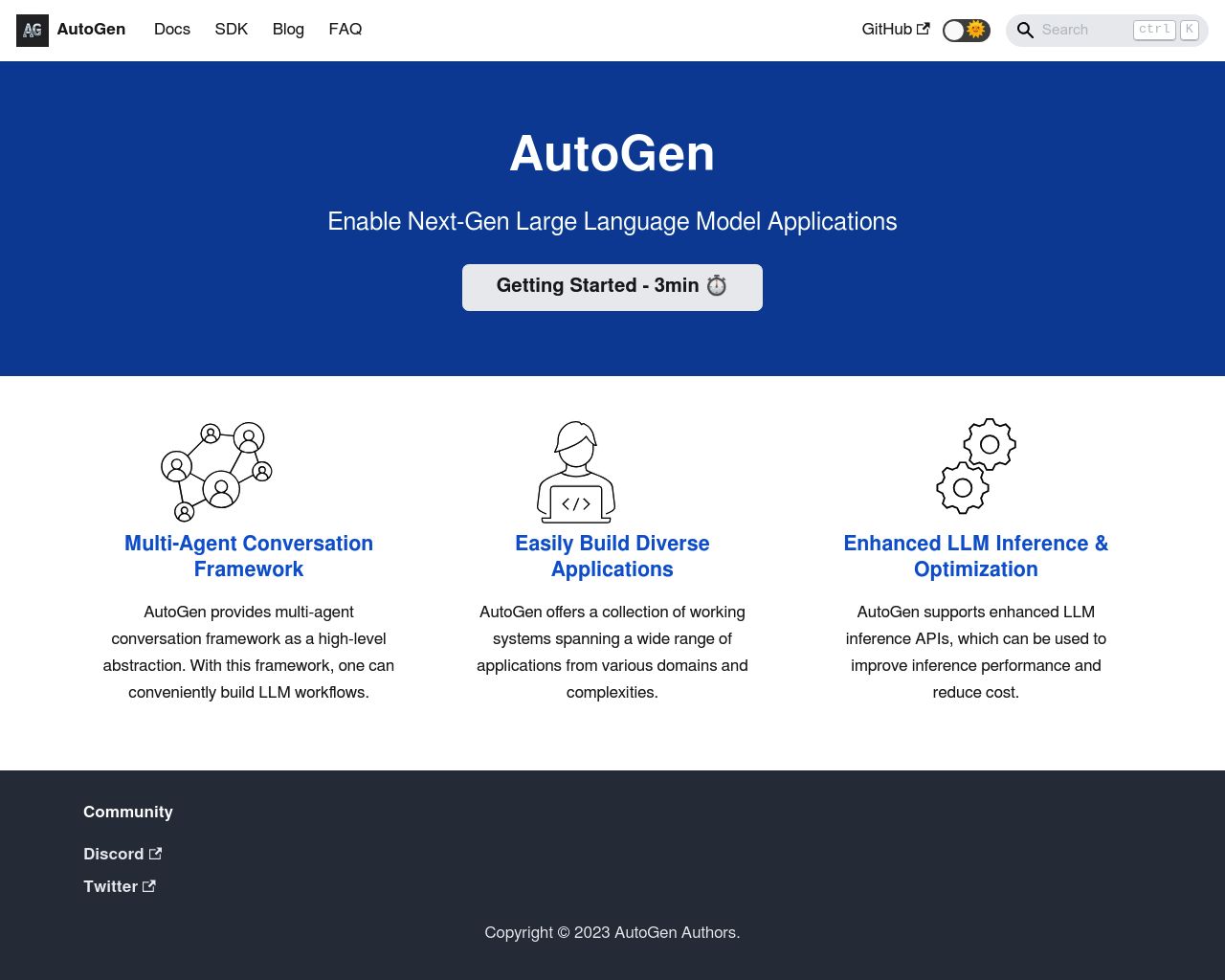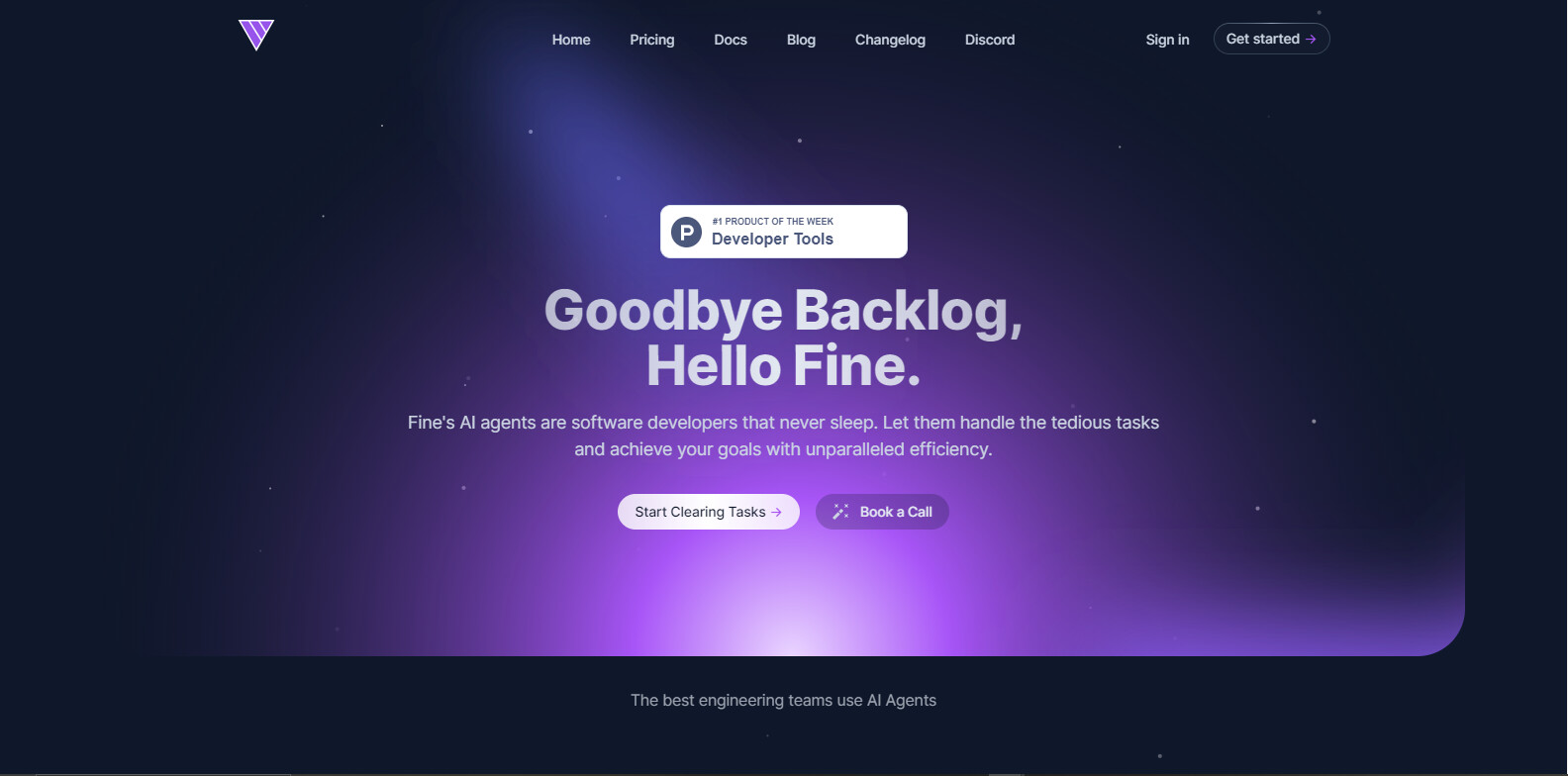AutoGen vs. Fine AI: Detailed Feature Comparison
AI agent development platforms transform how developers create intelligent software solutions. AutoGen, Fine AI, and SmythOS offer unique approaches to building AI-powered applications, each with distinct strengths. AutoGen excels in multi-agent conversations and LLM optimization, while Fine AI specializes in automating software development tasks. SmythOS stands out by combining powerful features with user-friendly design, making AI development accessible to both technical and non-technical users. This comparison explores how these platforms empower developers, business leaders, and AI enthusiasts to harness cutting-edge AI capabilities, streamline workflows, and create innovative solutions across industries.
AutoGen Overview
AutoGen empowers developers to build sophisticated Large Language Model (LLM) applications through multi-agent conversations. This open-source framework enables the creation of customizable, conversable AI agents that interact with each other, LLMs, tools, and humans to tackle complex tasks.


AutoGen’s core strength lies in its ability to facilitate autonomous multi-agent conversations. These agents collaborate to perform tasks independently or with human input, adapting to various use cases. The framework maximizes LLM performance through enhanced inference capabilities, including tuning, caching, error handling, and templating—crucial for optimizing expensive models like GPT-4.
AutoGen empowers developers to build sophisticated Large Language Model (LLM) applications through multi-agent conversations.
Developers can tailor agents to specific needs, integrating LLMs, human inputs, and various tools. AutoGen supports both fully autonomous operations and human-in-the-loop problem-solving, making it versatile for applications where human oversight is essential. The framework has demonstrated effectiveness in automated task solving, code generation, continual learning, and complex problem-solving in group chat scenarios.
While AutoGen offers powerful capabilities, it requires coding knowledge for setup and lacks a visual builder or no-code editor. This may present a learning curve for non-technical users. However, the framework provides useful debugging tools and logging functionalities for API calls, essential for optimizing LLM-based systems. AutoGen also includes EcoOptiGen, a cost-effective technique for tuning large language models, highlighting its focus on enhancing LLM efficiency.
AutoGen’s core strength lies in its ability to facilitate autonomous multi-agent conversations…adapting to various use cases.
AutoGen’s vision centers on expanding LLM application capabilities, promoting autonomous operations with optional human involvement, and providing a flexible platform for complex tasks. By focusing on conversation-driven control, agent customization, and enhanced LLM utilization, AutoGen positions itself as a versatile tool in the realm of conversational AI and LLM applications.
Fine AI Overview
Fine AI empowers developers to create specialized AI agents that automate software development tasks. The platform enables building agents for backend, frontend, and testing, capable of understanding specifications and implementing coherent code changes across projects.
Fine AI’s agents excel at handling repetitive coding tasks, allowing engineers to focus on complex problem-solving. The platform promotes human-AI collaboration, aiming to boost developer productivity and restore the joy of building software by eliminating tedious coding work.
Fine AI empowers developers to create specialized AI agents that automate software development tasks… capable of understanding specifications and implementing coherent code changes across projects.


Key features of Fine AI include a desktop application for configuring workflows and agents, a library of ready-made agents for common tasks, and the ability to run agents locally on repositories. The platform also offers notebooks for authoring technical specifications, facilitating seamless integration into existing development processes.
Fine AI differentiates itself by focusing on tailored agents aligned with developers’ specific technology stacks, rather than providing general-purpose assistants. This approach aims to transform the developer inner loop through intelligent automation, streamlining workflows and enhancing productivity.
Fine AI differentiates itself by focusing on tailored agents aligned with developers’ specific technology stacks, rather than providing general-purpose assistants.
While Fine AI offers powerful capabilities for automating development tasks, it may require some technical expertise to set up and configure effectively. The platform’s emphasis on code-based workflows might present a learning curve for users less familiar with programming concepts. However, for development teams looking to optimize their processes and leverage AI in their daily work, Fine AI provides a compelling solution to augment human capabilities and accelerate software development cycles.
Feature Comparison
AutoGen and Fine AI offer distinct approaches to AI agent development, with notable differences in their core components and security features. AutoGen excels in facilitating multi-agent conversations and enhancing Large Language Model inference, providing a flexible framework for developers to create customizable, conversable AI agents. It supports autonomous operations with optional human involvement, making it adaptable for various use cases. However, AutoGen lacks a visual builder or no-code editor, requiring coding knowledge for setup and configuration.
Fine AI, on the other hand, focuses specifically on automating software development tasks. It provides a desktop application for configuring workflows and agents, along with a library of ready-made agents for common tasks. Fine AI’s strength lies in its ability to understand specifications and implement coherent code changes across projects. Unlike AutoGen, Fine AI offers a more tailored approach aligned with developers’ specific technology stacks, rather than providing general-purpose assistants.
In terms of security, both platforms have limitations. While AutoGen supports OAuth for authentication, neither platform explicitly mentions advanced security features like data encryption or IP control. This gap in security offerings may be a concern for enterprises dealing with sensitive data or requiring robust security measures.
Feature Comparison Table
| AutoGen | Fine AI | SmythOS | |
|---|---|---|---|
| CORE FEATURES | |||
| Hosted Agents (Dev, Production) | ✅ | ❌ | ✅ |
| Environments (Dev, Production) | ✅ | ❌ | ✅ |
| Visual Builder | ❌ | ❌ | ✅ |
| No-Code Options | ❌ | ❌ | ✅ |
| Explainability & Transparency | ✅ | ❌ | ✅ |
| Debug Tools | ✅ | ❌ | ✅ |
| Multimodal | ✅ | ❌ | ✅ |
| Multi-Agent Collaboration | ✅ | ❌ | ✅ |
| Audit Logs for Analytics | ✅ | ❌ | ✅ |
| Agent Work Scheduler | ❌ | ✅ | ✅ |
| SECURITY | |||
| Constrained Alignment | ❌ | ❌ | ✅ |
| Data Encryption | ✅ | ❌ | ✅ |
| OAuth | ✅ | ❌ | ✅ |
| IP Control | ❌ | ❌ | ✅ |
| COMPONENTS | |||
| Foundation AIs | ✅ | ❌ | ✅ |
| Huggingface AIs | ✅ | ❌ | ✅ |
| Zapier APIs | ✅ | ❌ | ✅ |
| All other APIs, RPA | ✅ | ❌ | ✅ |
| Classifiers | ✅ | ❌ | ✅ |
| Logic | ✅ | ❌ | ✅ |
| Data Lakes | ❌ | ❌ | ✅ |
| DEPLOYMENT OPTIONS (EMBODIMENTS) | |||
| Deploy as API | ✅ | ❌ | ✅ |
| Deploy as Webhook | ✅ | ❌ | ✅ |
| Staging Domains | ❌ | ❌ | ✅ |
| Production Domains | ❌ | ❌ | ✅ |
| API Authentication (OAuth + Key) | ✅ | ❌ | ✅ |
| Deploy as Site Chat | ✅ | ❌ | ✅ |
| Deploy as Scheduled Agent | ❌ | ❌ | ✅ |
| Deploy as GPT | ✅ | ❌ | ✅ |
| Scalability | ✅ | ❌ | ✅ |
| DATA LAKE SUPPORT | |||
| Hosted Vector Database | ❌ | ❌ | ✅ |
| Sitemap Crawler | ❌ | ❌ | ✅ |
| YouTube Transcript Crawler | ❌ | ❌ | ✅ |
| URL Crawler | ✅ | ❌ | ✅ |
| PDF Support | ✅ | ❌ | ✅ |
| Word File Support | ✅ | ❌ | ✅ |
| TXT File Support | ✅ | ❌ | ✅ |
Conclusion
AutoGen, Fine AI, and SmythOS each offer unique approaches to AI agent development, catering to different needs in the software landscape. AutoGen excels in facilitating multi-agent conversations and enhancing LLM inference, making it a powerful tool for developers comfortable with coding. Fine AI focuses on automating software development tasks, providing a more specialized solution for development teams. However, SmythOS stands out as the most comprehensive and user-friendly option, offering a blend of powerful features and accessibility.
SmythOS’s drag-and-drop interface and no-code editor make it accessible to both technical and non-technical users, democratizing AI development. Its extensive integration ecosystem, supporting over 300,000 integrations, allows for seamless incorporation into existing workflows. The platform’s versatility shines through its support for multimodal interactions, problem-solving capabilities, and scalable deployment options.
Unlike AutoGen and Fine AI, SmythOS provides robust security features, including data encryption and OAuth support, addressing enterprise-level concerns. The platform’s ability to deploy agents as APIs, webhooks, chatbots, or scheduled tasks offers unparalleled flexibility. With features like the Agent Work Scheduler and comprehensive logs and monitoring, SmythOS empowers users to create sophisticated AI solutions with ease.
For those looking to harness the full potential of AI agents, we recommend exploring SmythOS’s diverse range of AI-powered agent templates. These templates cover multiple business categories and provide an excellent starting point for building custom AI solutions. To experience the platform’s capabilities firsthand, create a free SmythOS account and start building AI agents with no time limit. With its user-friendly interface, extensive features, and commitment to innovation, SmythOS is poised to lead the next wave of AI-driven productivity and automation.
Last updated:
Disclaimer: The information presented in this article is for general informational purposes only and is provided as is. While we strive to keep the content up-to-date and accurate, we make no representations or warranties of any kind, express or implied, about the completeness, accuracy, reliability, suitability, or availability of the information contained in this article.
Any reliance you place on such information is strictly at your own risk. We reserve the right to make additions, deletions, or modifications to the contents of this article at any time without prior notice.
In no event will we be liable for any loss or damage including without limitation, indirect or consequential loss or damage, or any loss or damage whatsoever arising from loss of data, profits, or any other loss not specified herein arising out of, or in connection with, the use of this article.
Despite our best efforts, this article may contain oversights, errors, or omissions. If you notice any inaccuracies or have concerns about the content, please report them through our content feedback form. Your input helps us maintain the quality and reliability of our information.
